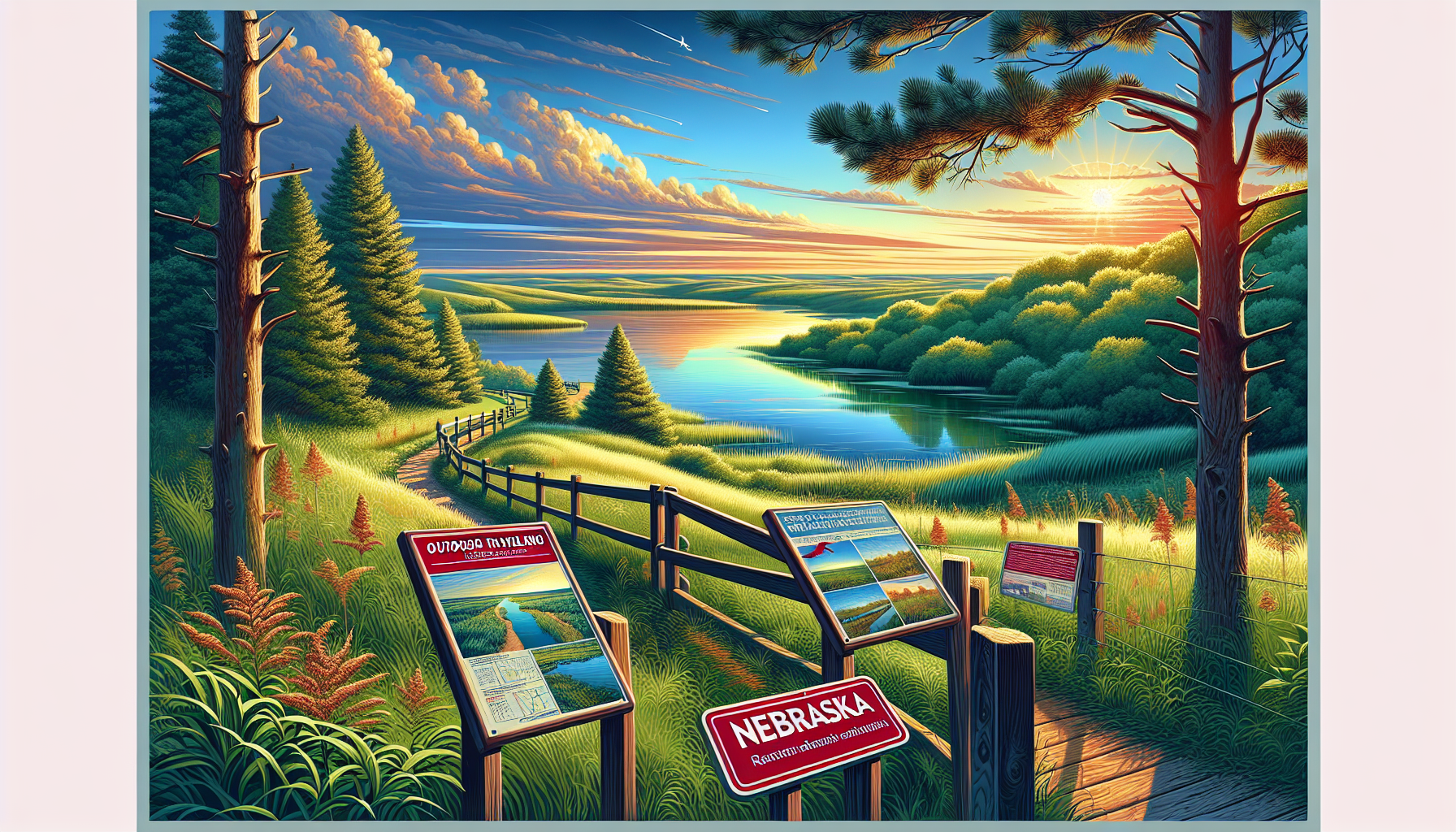Waterfowl Migration Patterns in Nebraska's Skies

As the seasons change, Nebraska's skies come alive with the sights and sounds of waterfowl migration. Each year, millions of ducks, geese, and sandpipers make their way through the state, following established flyways and stopover sites. The phenomenon of waterfowl migration is a remarkable spectacle that showcases the incredible adaptability and resilience of these birds.
The Central Flyway, which spans over 2,000 miles from Canada to Mexico, is one of the primary migration routes for waterfowl in North America. Nebraska, located in the heart of the Great Plains, serves as a critical stopover point for many species. The state's wetlands, rivers, and lakes provide essential habitat for waterfowl to rest, refuel, and replenish their energy reserves before continuing their journey. One notable example is the Rainwater Basin, a series of wetlands in south-central Nebraska that attracts hundreds of thousands of waterfowl each spring.
One of the most iconic waterfowl species to migrate through Nebraska is the Snow Goose. Each year, tens of thousands of Snow Geese stopover in the state's wetlands, particularly in the Rainwater Basin. These birds migrate from their breeding grounds in the Arctic tundra to their wintering grounds in the southern United States, a journey of over 3,000 miles. Another notable species is the Northern Pintail, a duck that migrates from its breeding grounds in the prairies of Canada to its wintering grounds in the Gulf Coast. The Nebraska Sandhills, with their numerous wetlands and shallow lakes, serve as a critical stopover point for this species.
Researchers have made significant strides in understanding the intricacies of waterfowl migration patterns in recent years. Advances in satellite tracking and geolocating technology have allowed scientists to monitor the movements of individual birds in real-time. For example, a study published in the Journal of Ornithology tracked the migration patterns of American Golden-Plovers, a shorebird species that migrates through Nebraska each spring. The study found that these birds make non-stop flights of over 2,000 miles from their wintering grounds in South America to their breeding grounds in the Arctic tundra.
In addition to the Central Flyway, Nebraska is also situated near the junction of the Mississippi Flyway and the Atlantic Flyway. This intersection creates a unique convergence of waterfowl migration patterns, making the state an ideal location for birdwatchers and researchers alike. The Platte River, which flows through the heart of Nebraska, serves as a vital corridor for waterfowl migration. The river's shallow waters and sandbars provide essential habitat for species such as the Lesser Sandpiper and the Sanderling.
Understanding waterfowl migration patterns is crucial for conservation efforts, as it allows researchers to identify critical stopover sites and habitat areas that require protection. In Nebraska, conservation efforts are underway to protect and restore wetlands and habitats that are essential for waterfowl migration. For example, the Nebraska Game and Parks Commission has established several wildlife management areas that provide habitat for waterfowl and other migratory birds.
In conclusion, waterfowl migration patterns in Nebraska are a remarkable phenomenon that showcases the incredible adaptability and resilience of these birds. The state's unique location at the intersection of several flyways makes it an ideal location for researchers and birdwatchers alike. By understanding the intricacies of waterfowl migration patterns, we can better protect and conserve these incredible birds and the habitats they rely on.
The detailed understanding of waterfowl migration patterns has significant implications for the conservation of these species and their habitats. Continued research and conservation efforts are essential to protect these incredible birds and the ecosystems they inhabit.
The Central Flyway, which spans over 2,000 miles from Canada to Mexico, is one of the primary migration routes for waterfowl in North America. Nebraska, located in the heart of the Great Plains, serves as a critical stopover point for many species. The state's wetlands, rivers, and lakes provide essential habitat for waterfowl to rest, refuel, and replenish their energy reserves before continuing their journey. One notable example is the Rainwater Basin, a series of wetlands in south-central Nebraska that attracts hundreds of thousands of waterfowl each spring.
One of the most iconic waterfowl species to migrate through Nebraska is the Snow Goose. Each year, tens of thousands of Snow Geese stopover in the state's wetlands, particularly in the Rainwater Basin. These birds migrate from their breeding grounds in the Arctic tundra to their wintering grounds in the southern United States, a journey of over 3,000 miles. Another notable species is the Northern Pintail, a duck that migrates from its breeding grounds in the prairies of Canada to its wintering grounds in the Gulf Coast. The Nebraska Sandhills, with their numerous wetlands and shallow lakes, serve as a critical stopover point for this species.
Researchers have made significant strides in understanding the intricacies of waterfowl migration patterns in recent years. Advances in satellite tracking and geolocating technology have allowed scientists to monitor the movements of individual birds in real-time. For example, a study published in the Journal of Ornithology tracked the migration patterns of American Golden-Plovers, a shorebird species that migrates through Nebraska each spring. The study found that these birds make non-stop flights of over 2,000 miles from their wintering grounds in South America to their breeding grounds in the Arctic tundra.
In addition to the Central Flyway, Nebraska is also situated near the junction of the Mississippi Flyway and the Atlantic Flyway. This intersection creates a unique convergence of waterfowl migration patterns, making the state an ideal location for birdwatchers and researchers alike. The Platte River, which flows through the heart of Nebraska, serves as a vital corridor for waterfowl migration. The river's shallow waters and sandbars provide essential habitat for species such as the Lesser Sandpiper and the Sanderling.
Understanding waterfowl migration patterns is crucial for conservation efforts, as it allows researchers to identify critical stopover sites and habitat areas that require protection. In Nebraska, conservation efforts are underway to protect and restore wetlands and habitats that are essential for waterfowl migration. For example, the Nebraska Game and Parks Commission has established several wildlife management areas that provide habitat for waterfowl and other migratory birds.
In conclusion, waterfowl migration patterns in Nebraska are a remarkable phenomenon that showcases the incredible adaptability and resilience of these birds. The state's unique location at the intersection of several flyways makes it an ideal location for researchers and birdwatchers alike. By understanding the intricacies of waterfowl migration patterns, we can better protect and conserve these incredible birds and the habitats they rely on.
The detailed understanding of waterfowl migration patterns has significant implications for the conservation of these species and their habitats. Continued research and conservation efforts are essential to protect these incredible birds and the ecosystems they inhabit.
